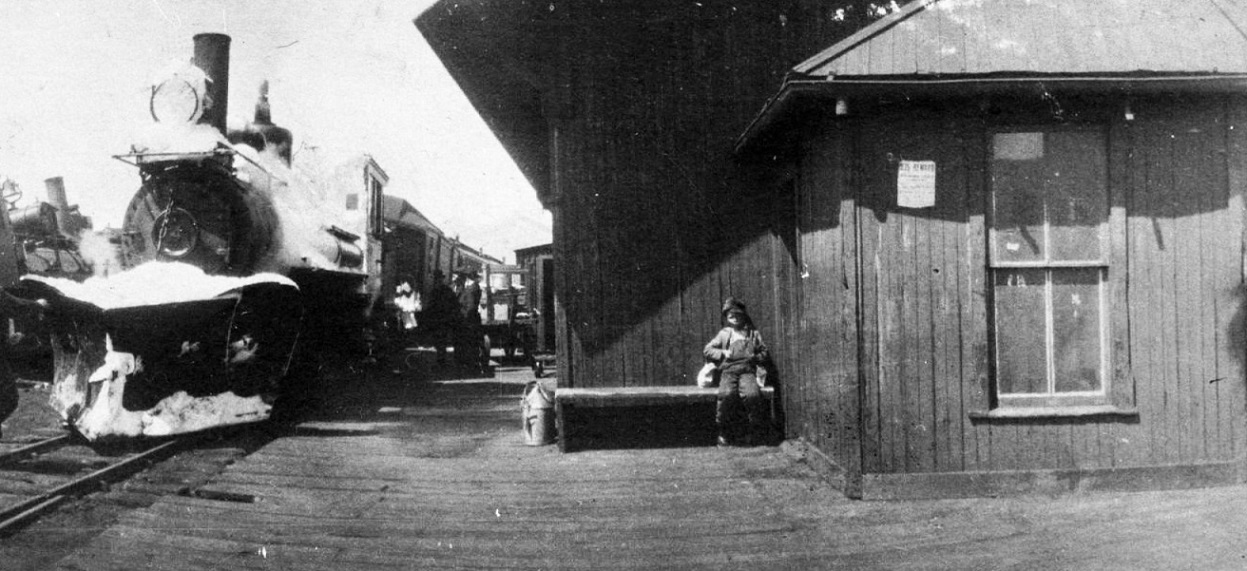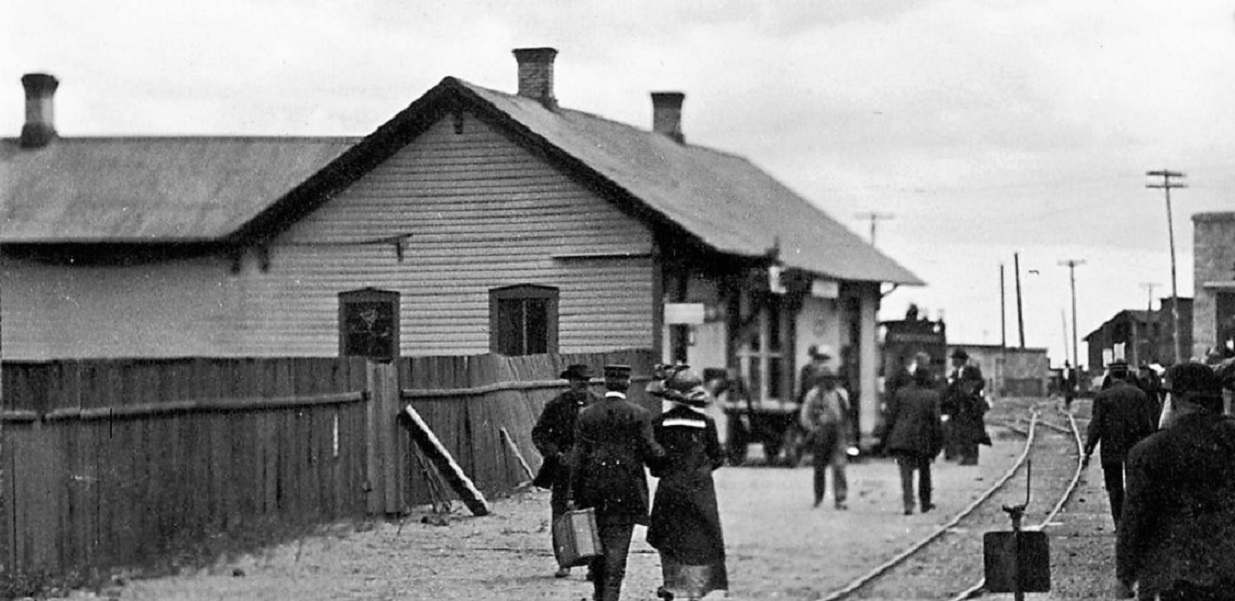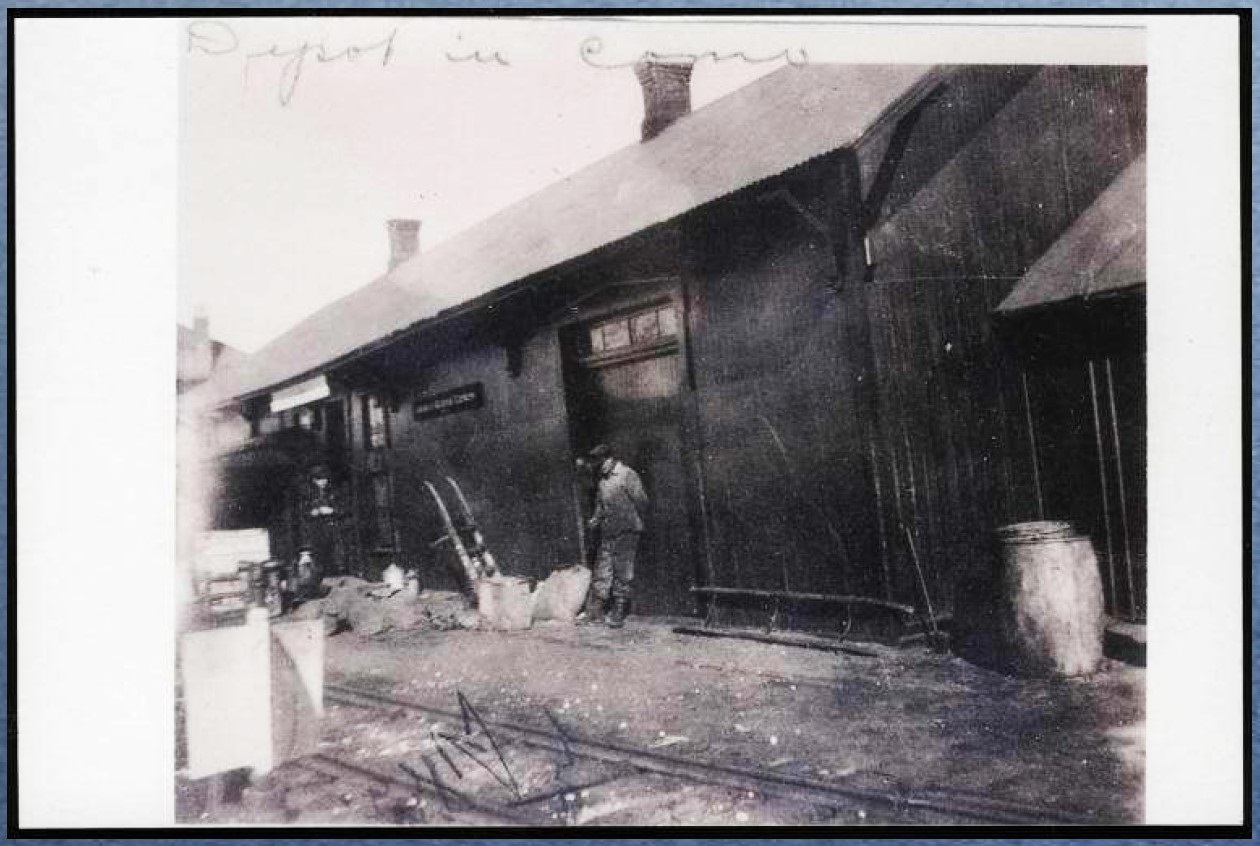Modelling telegraph insulators
123














123
Re: Modelling telegraph insulators
|
Jeff,
In the early 1900s the Colorado Midland dispatchers used a Telegraphone which was able to leave a message for the station operators who were off duty when they sent out orders. This may be what you are referring to. Tom VanWormer |
Re: Modelling telegraph insulators
|
In reply to this post by Jeff Young
What would later become the Rocky Mountain Telephone & Telegraph Co. had their rather substantial line to Leadville via Morrison, Baileys, Webster, Kenosha, Como, Fairplay, and Mosquito Pass by 1880, so it is quite likely that King had a drop from that. I question the need for a telegraph connection to the railroad ops, especially if they had phone in the camp there.
"Duty above all else except Honor"
|
|
In reply to this post by CM Auditor
Thanks fot the info on the Insulator, I think there ar 3? photos of King, all late from memory. I did speak some year back to a lady whose mother drew the map of King.
Begs the question of when did King become King? late 1880's? Also seen it called King City in its last few years. I assume the Upper Como spur was laid in 1879 and the Lower Como in 1880. Not sure of I have seen confirmation of those dates. |
Re: Modelling telegraph insulators
|
In reply to this post by South Park
On 9 Jan 2016, at 20:02, Bill Uffelman [via C&Sn3 Discussion Forum] <[hidden email]> wrote:
Wasn't there a single wire phone that could use telegraph lines as a direct connection? ============================================================= Early phone often ran on a ground return circuit .... in other words, one wire and a ground rod at each end to make the circuit. This made for lousy audio, but since it was a very new technology, no one complained at first. It wasn't long before the 2-wire "metallic" circuit was developed, and the single wire design rapidly faded away on all but what we historians call a "farmer line", ... privately built, typically out to the ranch or similar, and often hung on trees or fence lines, using the cheapest means possible to get a line through. Farmer lines were still to be seen all over Colorado, even in the 1970's, as was much standard openwire telephone construction.
"Duty above all else except Honor"
|
Re: Modelling telegraph insulators
|
In reply to this post by ComoDepot
" ... Begs the question of when did King become King?... "
============================================ If memory serves, the line to King was done in the original 1879 build across the park to Como. The RR needed coal for their locomotives and outside sales (if they did that) provided additional movement revenue. In the forst few years, the railroad was enormously profitable and could not keep up with all the traffic. The coal from King was not the best burning stuff, and the geology of the area made it tough to get out of the ground ... very wet and prone to slides/cave-ins. I think the UP gave up on it in the early 90's (?) and the branch was shortened to just the wye where the Breckenridge trains were turned and backed to the Como depot from. That arrangement lasted until the very end.
"Duty above all else except Honor"
|
|
The lower mines were not operational in 79. The upper mines hit a fault towards the end of 79 bit still seemed to be being worked.
I assume the wye was laid out when the spur was built but do not remember seeing anything that said one way or the other. |
Re: Modelling telegraph insulators
|
One of the SP books gives some timeline on King ... Poor, Digerness, Ferrell ? Can't remember. But it seems to me that it was very early and didn't last very long. Given the lack of photos of the place (or line), I have never been sparked to really take much of an interest beyond a general notation of being an early blip on the SP scene.
"Duty above all else except Honor"
|
Re: Modelling telegraph insulators
|
Two of the photos David (ComoDepot) mentioned are on the Park County Archives website, but they're not very helpful regarding railroad or telegraph/telephone lines.
http://www.parkcoarchives.org/photos/photos3/photos_king.html As I understand it the lower King mine was shut down due to the inability to control dust, and the resulting (deadly) explosions. (Perhaps the slides/cave-ins issue was what ended the upper King mine? Or perhaps different authors gave different reasons?) Burger, I think it was you that mentioned another early Leadville telegraph line from Clear Creek through Breckenridge to Leadville. Did that follow the Argentine Pass / Peru Creek route to the Blue valley? And then where between Breck and Leadville? Up over the saddle between Peak 9 and Peak 10 (where Wheeler Trail crosses)? Cheers, Jeff. |
|
The mines are perhaps for another time, there were always problems, but the big one was the cost in operating, just not viable compared to other sources.
I do have a good photo of the wye, let me have a look at that. |
|
The photo of the wye was taken probably 1883/4, Gilman has been extended, Depot has been extended but is attached to the Hotel and the Pacific Hotel Co have not arrived.
There is a telegraph pole to the left of the switch that would lead from Como to the Coal Banks/Lower Como. King had just arrived in South Park and was in Fairplay. It is leaning south but is braced from the north, maybe hit? Seems odd that this would happen so quickly, you can see it had 4 insulators, but that is about it. From a bit lower the lines cut cross Park Gulch to the Depot. In November 1879 Thayer the labour master is reported as walking to the Como Depot to check on a delivery suggesting there was no spur and no telegraph. Why would he have walked there if there had been? David |
Re: Modelling telegraph insulators
|
I believe this is the picture David refers to:
 Park County Archives |
Re: Modelling telegraph insulators
|
Guys, Any insight as to why the guard rails on the turnout were so long? Seem to be much longer than what we are used to as the standard today. Could it be that they just didn't want to take the effort to cut the guard rails to a more standard length? Interesting photo though... Best, Todd Ferguson Harrisburg, NC Sent from my Wacked and Cracked iPad III, OUCH!!!
|
Re: Modelling telegraph insulators
|
Hi Todd,
It appears that most DSP&P and CC track work had those long guard rails, and that at least some of them survived into C&S ownership. It got discussed a little bit here: http://c-sn3-discussion-forum.41377.n7.nabble.com/Switch-stand-support-tie-arrangements-td3411.html#a3417 Cheers, Jeff. |
Re: Modelling telegraph insulators
|
What about rail braces on curves?
|
Re: Modelling telegraph insulators
|
The original build to Como was 2 wires, with the wires diverging at Buena Vista to Gunnison and Leadville. With the collapse of the "treaty" with the D&RG and the extension of the Breckenridge branch to Leadville, the mainline to Como was expanded to 4 wires, with two now servicing the Leadville highline. Your date of 83/84 is probably spot on. It was common practice on the South Park to inside brace corner-strain poles, as opposed to using a down guy to the outside of the curve. The line, as we see it here, remained pretty much this way until the major rebuild mentioned before by WU in 1919. Great photo. One I have never seen before!
"Duty above all else except Honor"
|
|
Thanks for the information on the telegraph system.
The thing that always puzzled me about that photo was the rear of the Hotel. You can see the Ice House on the left, then the chimney to the right but there is some sort of low structure denoted by black vertical lines, what are they? The chimney was about 30ft behind the Hotel and I presume is somehow related. |
Re: Telegraph insulators lead to depot colors
|
In reply to this post by ComoDepot
The 1883-1884 photo of Como is one I've never before seen, either.
With this photo in hand, it's possible to illustrate the chronology in depot color schemes that we have been discussing on another thread: http://c-sn3-discussion-forum.41377.n7.nabble.com/C-amp-S-structure-colors-td4159.html. 1880's DSP&P -- Light (grey?) scheme; can't tell if there is darker trim.  c1890s to c1907 UP/DL&G/early C&S -- UP solid mineral red.  c1900 Park County Archives http://cdm16079.contentdm.oclc.org/cdm/fullbrowser/collection/p15330coll22/id/5116/rv/singleitem  c1905 c1907-c1920 -- Back to light grey with green trim  c1912-1915 c1920-1937 -- CB&Q red with green trim http://www.fairy-lamp.com/PCHS/DSPPRR_Postal_Markings_compressed.pdf  Late 1920s
Jim Courtney
Poulsbo, WA |
|
Some general comments:
I think it is pretty much agreed that B&W photos are not helpful in determining colours, maybe dark and light would be the limit. Sometimes it can be difficult dating photos, even where they have a date on the back it may not be original. Sometimes there are things that at least allow you to get them in sequence. For the Hotel for example post Railroad photos show the trees so the size of them is a clue, for the Depot as far as I can tell the chimneys were never repaired so the number of courses visible can help. I am not hot on dating Railroad equipment but have been told it must be for example after x date as that coupler etc came in then. I need to dig out the paint report, there are two obvious issues with any sample, refers only to that location and does not have dates, only sequences. The environment is a killer for paint, especially dark shades, I am going to assume painting was done when only was really needed and they had the time, money, manpower to be bothered The photo with the little boy, is it painted at all? Seems the same as the platform. |
Re: Modelling telegraph insulators
|
In reply to this post by Jeff Young
I recently stumbled on some info which should shed a bit of light on this. The Nathrop to St. Elmo line was "abandoned" by the C&S in 1910, but the Stark brothers in St. Elmo continued to operate the line for WU until 1920 (and then for themselves into the 50s). In that first 10 years, they needed 60 poles reset and 28 insulators replaced. Assuming 50 poles/mile over 17 miles, that's about 7% of poles per decade, and 3% of insulators. Ball-park figures to be sure, but better than no ball-park at all. (Data is from Chappell et al, The South Park Line a Concise History.) Cheers, Jeff. |
Re: Modelling telegraph insulators
|
How could the telegraph line have been abandoned that early if the railroad was still running until 1924?
|
«
Return to C&Sng Discussion Forum
|
1 view|%1 views
| Free forum by Nabble | Edit this page |


